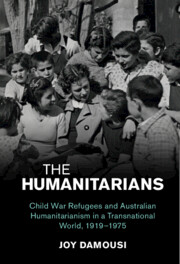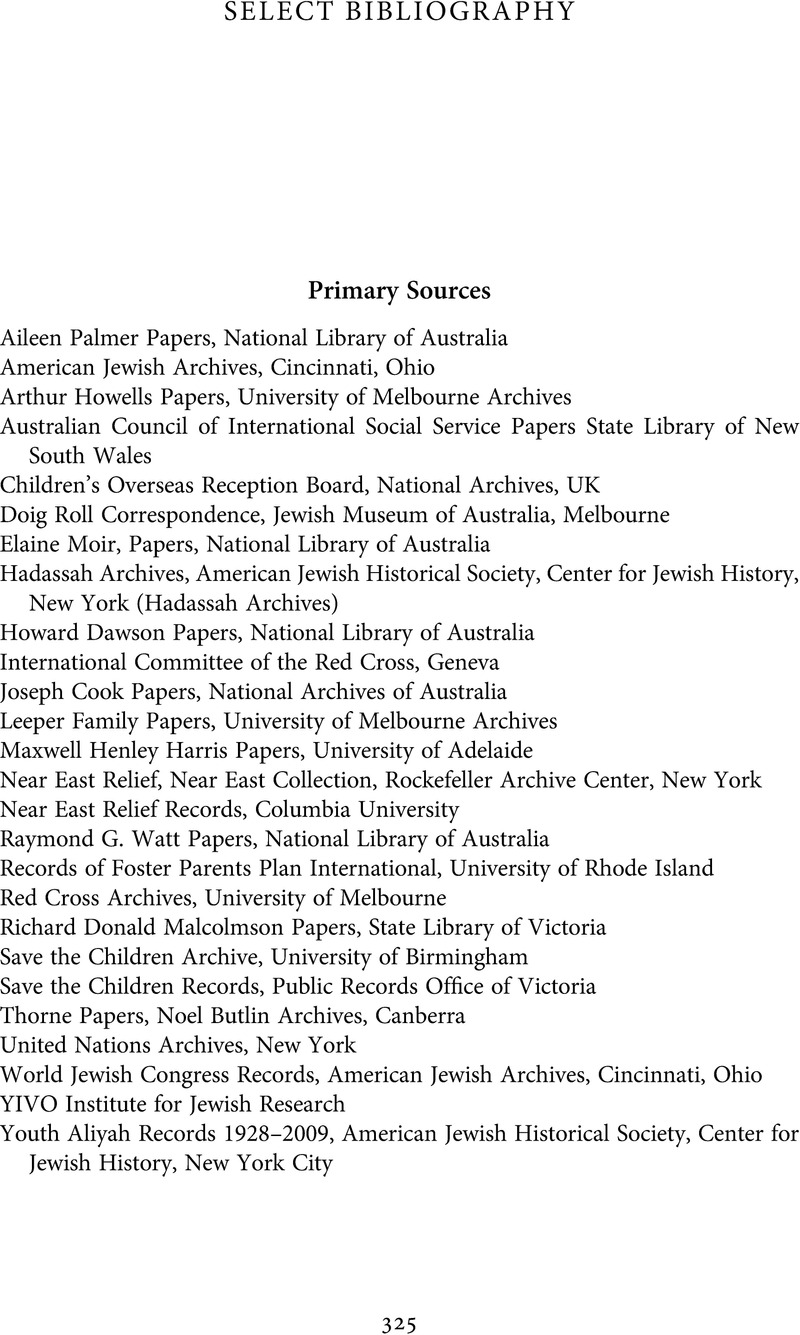 The Humanitarians
The Humanitarians Book contents
Select Bibliography
Published online by Cambridge University Press: 28 July 2022
Summary

- Type
- Chapter
- Information
- The HumanitariansChild War Refugees and Australian Humanitarianism in a Transnational World, 1919–1975, pp. 325 - 332Publisher: Cambridge University PressPrint publication year: 2022


